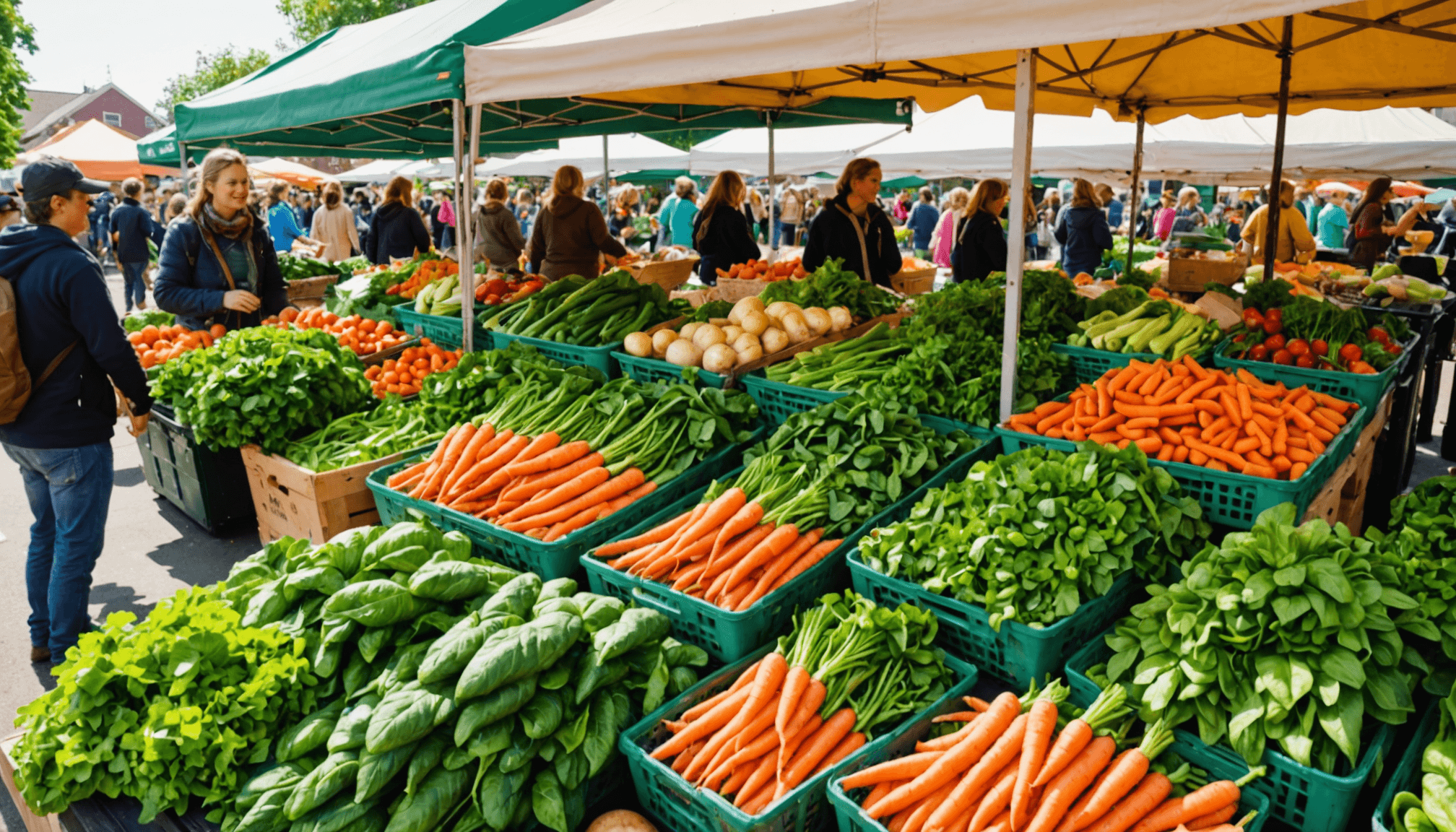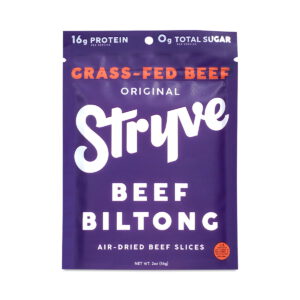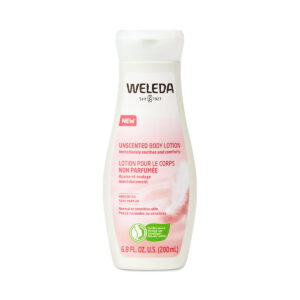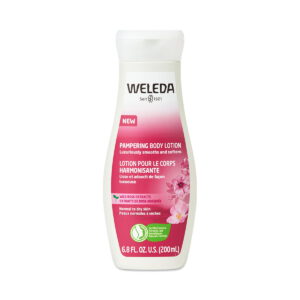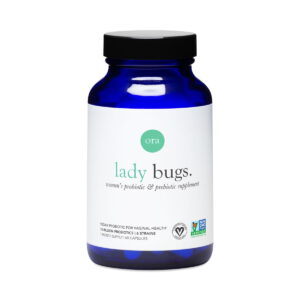- One-pot meal benefits
- Essential ingredients for one-pot meals
- Easy recipes for busy weeknights
- Tips for meal prepping
- Vegetarian one-pot options
- Kid-friendly one-pot dishes
When it comes to grocery shopping for your next round of easy dinners and one-pot meals, having a detailed strategy can make all the difference. Start by creating a list that focuses on healthy, budget-friendly, and versatile ingredients that can be utilized across multiple meals. This will not only save you time but also help reduce food waste.
Begin by stocking your pantry with essentials. Consider items like whole grains (quinoa, brown rice, or barley), legumes (canned beans or lentils), and spices. These ingredients serve as a nutritious base for many healthy recipes while offering great flexibility. For instance, you can easily create a hearty quinoa and vegetable stir-fry or a comforting lentil soup.
When shopping for fresh produce, aim for local farmers’ markets where you can find seasonal fruits and vegetables at a lower cost, allowing for better flavor and nutrient density. Look for vibrant greens like kale or spinach, nutrient-rich root vegetables such as sweet potatoes, and colorful bell peppers. These not only add flavor to your one-pot meals but also make your dishes visually appealing.
- Opt for Organic: If you’re shopping for produce, consider organic options, especially for vegetables and fruits on the ‘Dirty Dozen’ list, like strawberries and spinach, which are more likely to retain pesticide residues.
- Focus on Protein: For a balanced diet, seek lean protein sources like chicken breast or plant-based alternatives such as tofu, tempeh, or chickpeas. These options can easily be mixed into your meals and provide essential nutrients.
For vegan options, include items like nutritional yeast for a cheesy flavor and almond milk for creaminess in sauces. When buying frozen items, read labels carefully to avoid unnecessary preservatives and sugars. Look for products that are simple and straightforward, ideally with just one or two ingredients. Beans come frozen or canned and can provide a great protein boost, making them a versatile option.
Don’t forget to take advantage of online shopping, especially if you’re pressed for time. Many grocery stores offer online options with the ability to filter for organic and healthy foods. However, it’s crucial to check customer reviews and only purchase from well-reviewed sites. Pay attention to the freshness of perishable items, and choose delivery services that offer the option to choose delivery windows. This way, you can ensure that your fresh produce arrives in the best quality possible.
Save money by purchasing grains and beans in bulk—they’re often less expensive than pre-packaged. When it comes to herbs and spices, having a well-stocked spice rack at home allows you to create enticing one-pot meals without needing to buy additional seasonings each time you shop. Plus, investing in quality spices can elevate the flavors of your healthy recipes significantly.
By following these tips, you will make grocery shopping not just a task, but a fun, engaging experience that helps you prepare delicious, healthy, and easy dinners for you and your family. Embrace the art of meal planning, and watch how effortless it becomes to whip up satisfying one-pot meals!
Essential ingredients for one-pot meals
Stocking your kitchen with the right essential ingredients can transform your culinary experience, particularly when it comes to preparing one-pot meals. These meals are not only simple to prepare but also allow for a variety of flavors and nutrients to be combined effortlessly. Here is a detailed look at what you should consider for your pantry and fridge to maximize the potential of your cooking.
Start with a base of whole grains and legumes, which serve as the foundation for your easy dinners. Besides quinoa, brown rice, and barley, consider adding farro, millet, or couscous to your repertoire. Each of these grains provides unique flavors and textures, making them excellent choices for one-pot meals. Similarly, legumes such as black beans, kidney beans, and lentils are not only great sources of protein but also add heartiness to your dishes. Here’s a brief comparison of some staples:
| Ingredient | Type | Protein (per cup cooked) | Fiber (per cup cooked) | Cooking Time |
|---|---|---|---|---|
| Quinoa | Grain | 8g | 5g | 15 minutes |
| Lentils | Legume | 18g | 15g | 20 minutes |
| Brown Rice | Grain | 5g | 4g | 45 minutes |
| Chickpeas | Legume | 15g | 13g | 30 minutes |
In addition to grains and legumes, fresh vegetables are indispensable in crafting nutrient-dense one-pot meals. Stock up on a variety of vegetables, focusing on those that retain their quality when cooked, such as bell peppers, carrots, zucchini, and mushrooms. Leafy greens like spinach and kale can be added at the end of the cooking process to retain their texture and vibrant color. Incorporating a mix of colors from vegetables will not only boost the visual appeal of your dishes but also ensure a broad spectrum of essential vitamins and minerals.
Don’t forget about the importance of aromatics and spices in creating flavorful meals. Ingredients like garlic, onions, ginger, and herbs can completely change the profile of a meal with minimal effort. Fresh herbs like basil, cilantro, and parsley bring brightness to your recipes, while dried spices such as cumin, paprika, and turmeric offer depth and warmth. Having a well-stocked spice rack can inspire creativity in the kitchen, allowing you to experiment with new flavors without over-relying on heavy sauces or added fats.
For proteins, consider both animal and plant-based options. Chicken, turkey, and fish are great choices for quick-cooking proteins that complement any one-pot recipe. Alternatively, tofu, tempeh, and seitan are excellent for vegetarian dishes, easily absorbing flavors and contributing protein to your meals. Incorporating nuts and seeds, such as almonds or pumpkin seeds, can also add an unexpected crunch and additional nutrients to your dishes.
Finally, take advantage of condiments and sauces that can elevate your one-pot meals without adding excessive calories. Items like low-sodium soy sauce, broth, or tomato sauce can enhance the flavor of your meals significantly. Opt for natural or homemade versions whenever possible to avoid unnecessary additives.
Equipping your kitchen with these essential ingredients lays the groundwork for creating simple, easy, and healthy recipes that cater to all tastes and dietary preferences. With the right components on hand, meal preparation can be a creative and enjoyable experience, ensuring you consistently enjoy delicious one-pot meals throughout the week.
Easy recipes for busy weeknights

Grocery shopping should be a fun adventure rather than a daunting chore, especially when you’re hunting for items that will make meal prep for one-pot meals a breeze. When you’re pressed for time but still want healthy dinners, following a few practical shopping tips can make all the difference.
As you begin your shopping trip, consider creating a two-part list: one for fresh produce and another for pantry staples. This can help you stay organized and ensure you don’t forget any essential ingredients.
When selecting fresh produce, embrace seasonal offerings. Visit your local farmers’ market or grocery store’s produce section for fruits and vegetables that are fresh, vibrant, and often less expensive. Look for versatile veggies such as:
- Carrots: Great for soups and stir-fries.
- Zucchini: Perfect for sautéing or adding to pasta dishes.
- Spinach: A fantastic addition to almost any meal and particularly nutritious.
Seasonal items not only taste better but are richer in nutrients and often more budget-friendly. Don’t shy away from frozen fruits or veggies; they are picked at peak ripeness and flash-frozen, which preserves their nutrients. Frozen peas, for instance, can be a quick and easy way to add some green to your one-pot meals without the need for washing and chopping.
When it comes to grains, consider bulk bins for the best prices. Quinoa, brown rice, and farro can often be purchased at a lower cost when bought in larger quantities. These pantry staples serve as excellent bases for one-pot meals, offering fiber and protein, essential for a balanced diet. Adding herbs and spices can turn simple grains into something extraordinary, so don’t hesitate to pick up a few dried herbs like thyme or oregano, which are great for flavor without adding calories.
For fitness enthusiasts, focus on high-protein options like lentils, chickpeas, and beans. They are not only nutritious but also inexpensive sources of protein that can tidy up a one-pot meal easily. In a pinch, canned options are also a great time-saver. Just remember to rinse them well to reduce sodium content.
If you’re following a vegan diet, keep an eye out for nutritional yeast, which adds a cheesy flavor to dishes and is loaded with B vitamins. Almond or coconut milk can also be a wonderful, creamy base for your soups and sauces without any dairy.
When browsing for condiments and sauces, opt for low-sodium versions to keep sodium intake in check. Check labels for added sugars and preservatives—simplicity is key. A good-quality vegetable broth can serve as a flavor base for your meals, ensuring they remain healthy without sacrificing taste.
As for online shopping, it can save you valuable time. Make sure to shop at reputable sites with established customer reviews. Pay attention to any shipping policies regarding perishables to ensure your ingredients arrive fresh. Utilize filters to find organic products easily, helping you avoid chemicals that could detract from your healthy recipes.
Lastly, while on your shopping mission, remember that the best time to buy certain items is often right before they are about to expire. Many grocery stores will discount meats, fish, and produce to clear out inventory. If you find a deal, you can always freeze items for later use, ensuring nothing goes to waste.
By approaching your grocery shopping with a plan, you’ll not only save money but also set yourself up for weeks of easy, healthy dinners that bring joy to your table.
Tips for meal prepping
One of the best strategies for simplifying your cooking experience and ensuring you have delicious one-pot meals ready to go is effective meal prepping. Planning ahead can not only save you time during the week but also help you maintain healthy eating habits. To start, dedicate a specific day each week to your meal prep process, whether it’s Sunday or any other day that suits your schedule. This will allow you to organize your thoughts and get into a rhythm that ensures you have everything you need for satisfying, easy dinners throughout the week.
Begin your prep by selecting a few recipes that you’d like to feature for the week. Focus on a variety of proteins, grains, and vegetables to keep your meals diverse and interesting. When choosing recipes, consider those that share ingredients; for example, a dish with quinoa might also pair well with a mix of roasted vegetables for another meal. This not only streamlines your shopping list but also makes the cooking process efficient.
Next, set aside time to wash, chop, and prepare your vegetables. Prepping your produce in advance takes the guesswork out of meal assembly later on and allows you to grab what you need right away. Store chopped veggies in clear containers or zip-top bags in the fridge; you can even mix them according to your planned recipes. For frozen vegetables, consider portioning them out into freezer bags for easy access, making it convenient to add a splash of nutrition to your one-pot meals when you need them.
Once the vegetables are ready, move on to cooking your grains and proteins. Batch cooking these components means you won’t need to prepare them separately each time you want a meal. Cook up a big pot of brown rice, quinoa, or barley, and store it in single-serving containers. For proteins, you can grill chicken breasts, roast a whole salmon, or bake tofu, depending on your dietary preferences. This makes for easy assembly when it’s time to enjoy your meals.
Make sure to portion your meals according to your appetite and dietary needs. Utilize meal prep containers that are appropriately sized for your lunches or dinners. These containers can also help you visualize your meals, making it easier to avoid unhealthy snacking and to stick to your health goals.
Another convenient tip is to create sauces and dressings ahead of time. Make a large batch of your favorite sauce, such as a healthy pesto or a zesty vinaigrette, and store it in the fridge to dress up your one-pot meals easily. This not only enhances the flavor but also adds variety without much additional effort.
Don’t forget to label and date your meals or ingredients as well, especially if you’re using the freezer. This helps prevent confusion later on and ensures that you’re always reaching for the freshest options. Remember that prepped meals can last in the fridge for a few days, while frozen meals can extend your options for weeks ahead.
Effective meal prepping empowers you to make better choices during busy weekdays, ensuring that you always have healthy recipes ready to be assembled into satisfying one-pot meals. Embrace this process, and you’ll find that cooking and enjoying healthy dinners no longer feels like a chore but rather a pleasurable part of your lifestyle.
“By failing to prepare, you are preparing to fail.” – Benjamin Franklin
Vegetarian one-pot options
 When it comes to vegetarian one-pot options, the possibilities are as varied as your palate. These meals are not only easy to prepare but are a fantastic way to get an array of nutrients in one dish. Whether you’re an established vegetarian or simply seeking to incorporate more plant-based meals into your diet, these hearty recipes will impress even the most devoted meat eaters.
When it comes to vegetarian one-pot options, the possibilities are as varied as your palate. These meals are not only easy to prepare but are a fantastic way to get an array of nutrients in one dish. Whether you’re an established vegetarian or simply seeking to incorporate more plant-based meals into your diet, these hearty recipes will impress even the most devoted meat eaters.
Start with a base of grains or legumes for a fulfilling meal. For instance, a one-pot chickpea and spinach curry can be a nourishing and spice-infused dish that you can whip up in no time. Begin by sautéing onions, garlic, and ginger in a pot, adding a medley of spices like cumin, coriander, and turmeric, and then mix in canned chickpeas and diced tomatoes. Let it simmer before folding in fresh spinach for a pop of color and nutrition. Serve this delightful dish over brown rice or quinoa to complete your easy dinner.
Another succulent option is a vegetable and quinoa stir-fry, which can easily adapt to whatever fresh produce you have on hand. This allows for creativity and the use of seasonal vegetables, adding variety to your meals. Start by cooking quinoa in vegetable broth for added flavor. Then, in a large pan, sauté a mix of bell peppers, carrots, and broccoli. Toss the cooked quinoa in along with some soy sauce and sesame oil for a mouthwatering finish. Sprinkle sesame seeds on top for an extra crunch.
Consider also a comforting lentil soup that serves as a warm hug in a bowl. Lentils cook relatively quickly and provide a rich source of protein and fiber. Begin with a base of diced vegetables like carrots, celery, and onions, then add vegetable broth and rinsed lentils. Season generously with thyme, bay leaves, and a dash of vinegar before simmering until the lentils are tender. This one-pot dish is filling, economical, and incredibly easy to make.
For those craving a Mexican-inspired dish, you can prepare a black bean and corn skillet. Simply sauté onions and garlic, add black beans, corn, bell peppers, and a sprinkle of chili powder. Once everything is heated through, finish it off with a squeeze of lime juice and fresh cilantro for a refreshing twist. This colorful dish can stand on its own or be served with tortillas or over rice.
To take your one-pot meal experience even further, consider using seasonal produce and incorporating grains like farro or millet, which provide different textures and flavors. A vegetable medley with farro can be as simple as combining roasted vegetables like zucchini, eggplant, and cherry tomatoes with cooked farro, tossed with olive oil and your choice of herbs. Whether you choose thyme, rosemary, or a mix, fresh herbs can make a world of difference in elevating your dishes.
By exploring these vegetarian one-pot options, not only do you create vibrant and healthful meals, but you also minimize cleanup time and maximize flavor. Experimenting with different ingredients and spices will ignite your culinary curiosity, encouraging you to uncover new favorite recipes while promoting a balanced diet rich in vegetables and whole foods.
- What are the benefits of one-pot vegetarian meals?
- One-pot vegetarian meals are not only quick to prepare but also allow for the incorporation of various nutrients in a single dish. They save time on cooking and cleaning, making it easier to maintain a healthy eating routine.
- How can I make my one-pot meals more flavorful?
- Enhance the flavor of your one-pot meals by using aromatics such as garlic, onions, and ginger, and experimenting with a variety of spices and herbs. Fresh herbs, zest, and vinegar can also add brightness and depth to your dishes.
- Can I meal prep vegetarian one-pot meals?
- Absolutely! Meal prepping vegetarian one-pot meals can save a lot of time during the week. Cook larger batches of your favorite recipes, portion them into containers, and store them in the fridge or freezer for easy access.
- What types of grains work best in one-pot vegetarian meals?
- Whole grains such as quinoa, brown rice, farro, bulgur, and barley are excellent choices for one-pot vegetarian meals. They provide a hearty base and can absorb flavors well, complementing various vegetables and spices.
- Are there vegetarian one-pot meal options that children would enjoy?
- Yes! Many vegetarian one-pot meals can be made kid-friendly by incorporating familiar flavors. Dishes like vegetable stir-fry, cheesy pasta with spinach, or a simple lentil soup can be appealing to younger palates.
- What legumes are best for one-pot meals?
- Legumes such as lentils, chickpeas, black beans, and kidney beans work wonderfully in one-pot meals due to their protein content and versatility. They add heartiness to dishes without the need for meat.
- How can I ensure my one-pot meals are nutritious?
- To ensure your one-pot meals are nutritious, include a variety of vegetables, whole grains, and legumes. Balance your meals with healthy fats from sources like olive oil or nuts, and limit added sugars and sodium where possible.
Kid-friendly one-pot dishes
Parents know that preparing meals that please both kids and adults can feel like a juggling act. Luckily, one-pot meals are a lifesaver in this regard, providing a way to create satisfying and nutritious dishes without a kitchen disaster. As you venture into the grocery store, focus on kid-friendly ingredients that will make your one-pot meals a hit.
Start by stocking up on colorful and crunchy vegetables that appeal to kids’ eyes and palates. Think carrots, sweet bell peppers, and snap peas, which can add both texture and sweetness when cooked. If they enjoy a bit of flavor, consider searching for mild spices like cinnamon or paprika, which can make vegetables more appealing without overwhelming them. Here’s a list of veggies and simple ways to incorporate them into your meals:
- Carrots: Roast them alongside potatoes for a sweet side, or chop them up to stir into rice dishes.
- Bell Peppers: Add to any stir-fry or soup for color and taste, or stuff them with quinoa and beans.
- Spinach: Fold into pasta or grain dishes at the end of cooking to retain its vibrant color while boosting nutrition.
Proteins are also vital for developing young bodies, so consider incorporating lean meats, tofu, or legumes. Chicken and turkey are often kid favorites, but don’t overlook beans and lentils. These can be great additions to a hearty chili or a curry that simmers in one pot, allowing flavors to meld beautifully. Here’s a quick protein guide:
- Chickpeas: Mash or blend into a sauce for pasta, or roast for crunchy snacks.
- Tofu: Marinate and sauté until crispy—it’s a fantastic meat alternative that can be very kid-friendly.
- Ground Turkey: Use it in tacos or mixed with rice and veggies for a savored one-pot meal.
For grains, go for options that cook quickly and offer texture. Instant brown rice or quinoa can be ready in about 15 minutes, making them excellent choices for busy weeknights. You can prepare a simple stir-fried rice by cooking the grain and then adding whatever leftovers or frozen veggies you have on hand. This not only helps reduce food waste but also offers a canvas for kids to enjoy familiar tastes they can easily recognize.
When it comes to sauces and toppings, choose options that keep the meals healthy but still tempting. Kids often gravitate towards flavor-enhancers like low-sodium soy sauce, a homemade tomato sauce, or even a light sprinkle of cheese—just enough to entice them without overshadowing the nutrient density of the meal. Here are some ideas:
- Healthy sauces: Opt for homemade or simple versions; a yogurt dip can provide a creamy touch.
- Cheese: Experiment with different cheeses for toppings to discover what your kids love most!
- Fresh herbs: Use as garnishes; they can make the meal look fancy and fun, which might beckon a second look!
On the shopping front, consider buying ingredients in bulk where possible—especially staples like rice, beans, and pasta. This can help save money and ensure you always have a base for your one-pot meals ready to go. Don’t forget to explore your local markets, where fresh produce often has better flavor and can be more budget-friendly, enhancing your family’s meals.
As for online shopping, keep an eye on the delivery dates for fresh produce and look for services that prioritize quality. When shopping online, you can easily filter search results to find organic or nutrient-rich options. Always read customer reviews to ensure you’re choosing sources you can trust.
Lastly, get your little ones involved in the grocery process. Give them choices and let them pick out fruits and veggies they want to try in their meals. By making them a part of the cooking and shopping experience, you may encourage them to be more adventurous eaters—and you’ll create wonderful family memories in the kitchen!
New Customers Offer!
Free Gift for the new customer
$24 Value, When You Subscrib Visit Thrive Market
